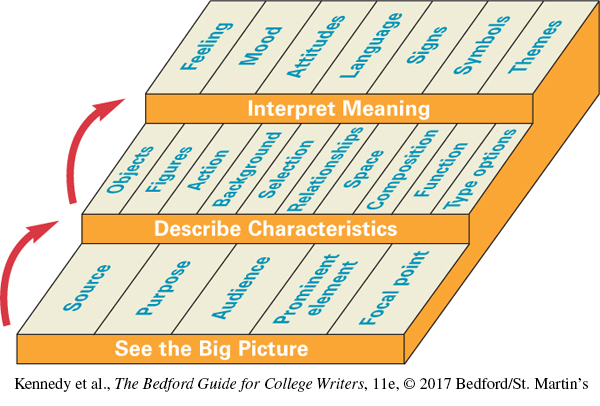Using Strategies for Visual Analysis
Just as you annotate or respond to a written text, do the same to record your observations and interpretations of images. Include a copy of the image, if available, when you solicit peer review or submit your essay. Begin your visual analysis by conducting a close reading of the image. Like a literal and critical reading of a written text, a close reading of an image involves careful, in-depth examination of the advertisement, photograph, cartoon, artwork, or other visual on three levels:
What is the big picture? What is the source of the image? What is its purpose? What audience does it address? What prominent element in the image stands out? What focal point draws the eye?
What characteristics of the image can you observe? What story does the image tell? What people or animals appear in the image? What are the major elements of the image? How are they arranged?
How can you interpret what the image suggests? What feeling or mood does it create? What is its cultural meaning? What are the roles of any signs, symbols, or language that it includes? What is its theme?
For more on literal and critical reading of texts, see Ch. 2.
As you analyze visuals, you may discover that your classmates respond differently than you do to some images, just as they might to a written text. Your personal cultural background and your experiences may influence how you see the meaning of an image. As a result, your thesis interpreting the meaning of an image or analyzing its effectiveness will be your own—shaped by your responses and supported by your observations.
